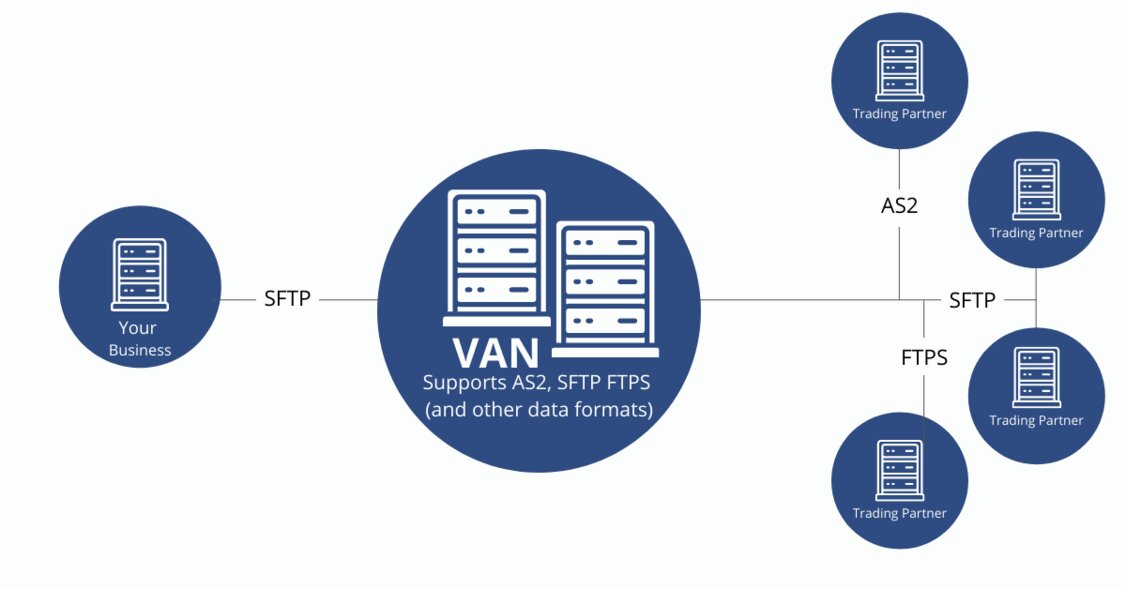Introduction
What Is a Value-Added Network (VAN)? Businesses utilize value-added networks (VANs) to communicate and exchange information. A VAN's primary objective is to make EDI (Electronic Data Interchange) between companies easier. A common carrier that already exists is atop the VAN. Value-added services are extra services that the carrier offers on top of the infrastructure. Thus, the value-added network is so named. A VAN is a closed network, meaning only its users can access the data. VANs use a distinct infrastructure and are not connected to the general internet.
How a Value-Added Network (VAN) Works
Big businesses typically utilize value-added networks for effective supply chain management with their suppliers and trade associations or telecom providers. A company transmits a transaction to the VAN in a typical VAN operation, which then deposits it in the recipient's mailbox. After contacting the VAN and picking up the transaction, the receiver sends its transaction. The system is comparable to email, but instead of unstructured text, it is used for standardized structured data.
Why Use an EDI Value Added Network?
Although a VAN's original purpose was to serve as the primary communication route for securely transferring data from one mailbox to another, it can also perform other services. It is one of the most widely used EDI systems today. New EDI standards and communication protocols have emerged, and VANs have developed to support a wide range of requirements. VAN now has EDI translation, data validation, reprocessing, authentication, encryption, and reporting capabilities. Other services that aim to streamline document interchange with several partners via EDI networks are also included in VANs.
Value Added Networks Solidify The Supply Chain
No matter how old or established their online presence is, e-commerce businesses have a number of everyday duties that call for team and company communication. Supply chain management is most effective when information is shared, and real-time communication between businesses, retailers, and suppliers is made possible. A value-added network aids in streamlining the procedure by safely permitting data sharing and communication between business partners. Managers, executives, and owners of internet businesses have more time to focus on other crucial matters when there are fewer parties with whom they must speak.

Types of VAN
Three broad categories can be used to classify the many VAN types:
- One-to-one. is a direct VAN connection that is typically specially designed to transport communications only between two partners. A one-to-one VAN might be advantageous for a business with a sole supplier.
- Many-to-many. Since each network member can share data with everyone else, a larger company that links suppliers and buyers might pick this. A many-to-many VAN might help a wholesaler that connects stores and producers.
- One-to-many. With this kind of VAN, one firm is connected to numerous others, much as the old model. A one-to-many VAN might be advantageous to a merchant who deals with multiple suppliers.
VAN Benefits
Value-added networks are being taken into account by more and more businesses as a critical component of their EDI strategy. This is true no matter the industry, size, or level of EDI experience. Many EDI experts agree that adopting EDI VAN services has the following primary advantages:
It decreased operating costs for the company. A rise in supplier and consumer compliance. Improved efficiency, accuracy, and security. Greater B2B collaboration and quicker order-to-cash cycles. Increased awareness of EDI transactions and processes
Last but not least, the following are a few factors you might want to take into account while choosing an EDI VAN provider:
Several communication protocols are supported. Any-to-any conversion into open-source and closed-source formats Onboarding and administration of trading partners. Complete ERP or accounting system integration Options for an affordable, dependable price. Modern security includes document encryption and document authentication. Archiving electronic documents and trading partners
Challenges for VANs
Networks with value-added are pretty helpful. However, there are other factors to take into account in the era of the internet and highly advanced communications capabilities, such as:
1. Building Costs
VANs are isolated networks; as previously mentioned, a business would need to pay for the infrastructure and engage specialist workers to establish the network. On the other hand, internet-based systems require software development because most infrastructure is already in place.
2. Maintenance and Upgrade
The network needs technical and skilled staff to function. Furthermore, because each network is different, upgrading is also challenging. Internet-based technologies, in contrast, are simpler to maintain and don't require an exceptionally high level of technological skill.

Conclusion
A Value-Added Network (VAN): What Is It? Value-added networks are frequently utilized for corporate Electronic Data Interchange (EDI). VANs facilitate communication by reducing the number of participants involved. VANs play a crucial role in supply chain management.



